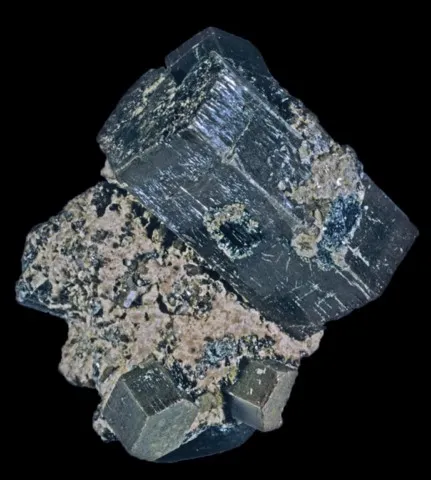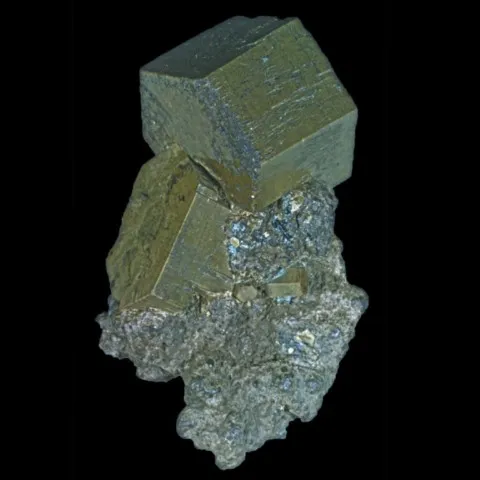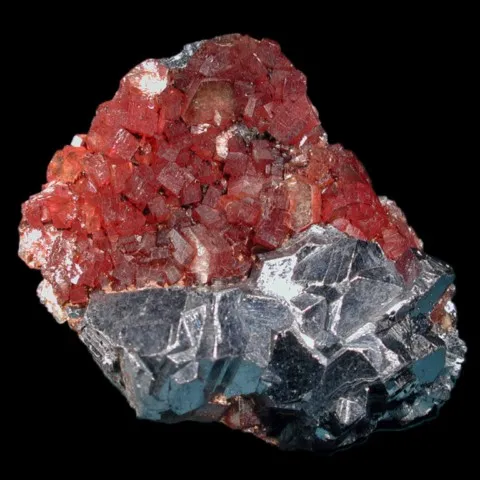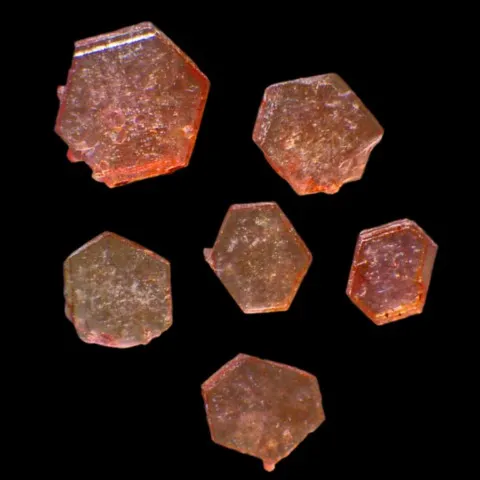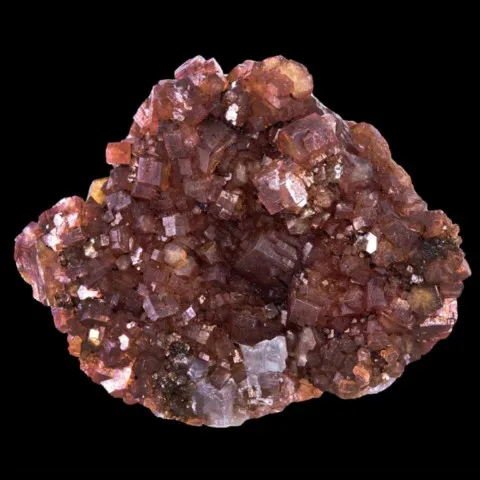PYROSMALITE
Class : Silicates
Subclass : Phyllosilicates
Crystal system : Trigonal
Chemistry : (Fe,Mn)8Si6O15(OH,Cl)10
Rarity : Uncommon
Pyrosmalite is a phyllosilicate which forms at the expense of manganese silicates in areas having undergone contact metamorphism. It is the dimorph of friedelite, which forms an isomorphic series with manganopyrosmalite, its manganiferous equivalent. Ferropyrosmalite is considered an iron-bearing variety of pyrosmalite and not a mineral in its own right. Its name comes from the Greek pûr (fire), odma (smell) and lithos (stone), because it gives off a strong chlorine odor when heated. Pyrosmalite forms typical hexagonal crystals, prismatic to tabular, with a common barrel facies, or leafy aggregates of pistachio green to green-brown color, rarely red-orange.
Main photo : Pyrosmalite from Nordmark Odal Field, Bergslagen, Sweden © Rock Currier
Pyrosmalite in the World
In France, pyrosmalite is present in metamorphosed manganese deposits in the Pyrenees (Adervielle, Mail-de-la-Pique) and at Combe Brémond (Alpes-de-Haute-Provence).
Twinning
No twins known for this mineral species.
Fakes and treatments
No fakes listed for this mineral species.
Hardness : 4 to 4.5
Density : 3.06 to 3.19
Fracture : Undetermined
Streak : White
TP : Translucent
RI : 1.631 to 1.680
Birefringence : 0.038 to 0.040
Optical character : Uniaxial -
Pleochroism : Visible
Fluorescence : None
Solubility : -
Magnetism : NoneRadioactivity : None

